The academic problem with this type of article - is that it is discussing a Chinese martial culture transported to Okinawa (which was a tributary State of China until 1879) - and yet possesses no Chinese language references. (Chinese martial arts do not originate in America or Japan). It is US and Japanese trends in their own respective academic traditions - reinforcing (without any Chinese input) their own ideas about China (regardless of whether any of the knowledge claims are 'true' or 'false'). The single 'Chinese' reference comes from a Chinese-American (JM Yang) - who could not prove any of his lineage claims in China, etc. A good example that breaks through this type of thinking in the West (and Japan) is Brian Victoria's 'Zen At War' (an uncomfortable read for many). Brian Victoria is an Australian who lives in Japan - and yet can read, write and speak the Japanese language. He explains how many post-WWII Japanese 'Zen' and 'martial' heroes in the West where well-known 'War Criminals' in Japan - with DT Suzuki serving as just one example. The translation work of Thomas and JC Cleary also often exposes the US-Japanese lie which falsely suggests Chinese Buddhism 'died-out' in China and is only now preserved within Japan! Master Xu Yun (1840-1959) had much to say on the Japanese behaviour abroad being motivated by their 'Nationalism' and a lack of basic Buddhist and Confucian morality - even thought 'Shinto' (Shen Dao) - in its Chinese original form - could possibly be a type of 'Daoist' nature worship!
|
Dear Tony
The academic problem with this type of article - is that it is discussing a Chinese martial culture transported to Okinawa (which was a tributary State of China until 1879) - and yet possesses no Chinese language references. (Chinese martial arts do not originate in America or Japan). It is US and Japanese trends in their own respective academic traditions - reinforcing (without any Chinese input) their own ideas about China (regardless of whether any of the knowledge claims are 'true' or 'false'). The single 'Chinese' reference comes from a Chinese-American (JM Yang) - who could not prove any of his lineage claims in China, etc. A good example that breaks through this type of thinking in the West (and Japan) is Brian Victoria's 'Zen At War' (an uncomfortable read for many). Brian Victoria is an Australian who lives in Japan - and yet can read, write and speak the Japanese language. He explains how many post-WWII Japanese 'Zen' and 'martial' heroes in the West where well-known 'War Criminals' in Japan - with DT Suzuki serving as just one example. The translation work of Thomas and JC Cleary also often exposes the US-Japanese lie which falsely suggests Chinese Buddhism 'died-out' in China and is only now preserved within Japan! Master Xu Yun (1840-1959) had much to say on the Japanese behaviour abroad being motivated by their 'Nationalism' and a lack of basic Buddhist and Confucian morality - even thought 'Shinto' (Shen Dao) - in its Chinese original form - could possibly be a type of 'Daoist' nature worship!
0 Comments
 The Article is from the Fuzhou Wushu Association which Carries Out Ongoing Research into the Chinese Origins of Okinawan Goju Ryu Karate-Do! This Article is Hosted on the Above Website in Zhejiang (China) Which was Established in 2008 as an Education Facility Introducing Okinawan Goju Ryu Karate-Do to the General Population! The Above Chinese Language Script Reads '冲绳刚柔流空手道华道馆' or 'Okinawan Goju Ryu Karate-Do - Culture Way Hall' 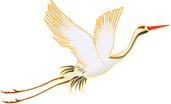 Elegant White Crane! Elegant White Crane! Translator’s Note: This Chinese language article was originally published by the Fuzhou Wushu Association in 2009 (on a Chinese language website based in Zhejiang dedicated to the history, theory and practice of Okinawan Goju Ryu). The content covers events from twenty-years earlier (c. 1989) and seeks to discover who was the Chinese Master who taught Fujian martial arts to the Okinawan traveller - Higaonna Kanryō. Researchers outside of Asia tend to approach this subject from the Anglicised rendering of a Chinese name preserved in Japan - ‘Ryu Ryu Ko’ - which often causes confusion amongst Westerners as it seems very similar to the title of the unconnected ‘Ryu Kyu’ (琉球) Islands – the name of the chain of islands Okinawa happens to be part of. Within Japan and China today, the title ‘Ryu Ryu Ko’ is shortened to ‘Ro Ro Ku’ - as it is a ‘nickname’ the phonetical expression in the English language is only approximate. A number of Chinese researchers are of the opinion that ‘Ryu Ryu Ko’ (如如哥) is a title more likely to have been used in Beijing and is unlikely to have been used in Fuzhou. What is mentioned but not elaborated upon in this article – is the historical reality that ‘Officials’ (that is those individuals who have studied for, sat and passed the Imperial Examinations) were often posted to faraway places where it was their duty to communicate in the ‘Beijing’ dialect (the language of governance throughout China regardless of local dialects). An example of this involves the famous Ch’an Buddhist Master Xu Yun (1840-1959) who was born in the Quanzhou area of Fujian province. His is father was a government ‘Official’ working in Fujian province who was originally from Hunan. Despite living in Fujian province, at home Master Xu Yun’s family spoke the Hunan dialect whilst at work his father spoke the Beijing dialect. Despite being posted together with his family faraway – the connection with the ancestral land was never forgotten or given-up. Marriage partners were chosen from Hunan for Hunanese men and women born in Fujian – and when deaths occurred, the bodies were ceremoniously taken back to Hunan for burial. Therefore, it is not beyond the realms of possibility that Ru Ru Ko was from a family of ‘Officials’ that had originated in Beijing but had been posted to Fujian. This is a realistic example of how ‘Ru Ru Ko’ could have been from a cultural milieu originating in Beijing. As multiple languages are being used (Japanese, Chinese and English), as well as transliteration and phonetical interpretations, it is important that the logical basis of this article is clearly established. Needless to say, research in the Chinese cultural milieu is very different to research carried-out in the English language. For the Chinese language researcher, the investigation begins with the ideograms ‘如如哥’ (pronounced ‘Ru Ru Ge’). This has no obvious linguistic or cultural connection with the Fujian dialect. In Japan these three ideograms are transliterated as ‘儿 - 儿 - コ’ (Ru Ru Ko) - but ‘why’ these ideograms were chosen is something of a mystery as the ideogram ‘儿’ is a simplification of ‘兒’ (er2) which means ‘child’ or ‘son’ (which is used twice). Bear in mind that many Japanese ideograms are either direct borrowings from the Chinese language or modifications. The third ‘Japanese’ ideogram ‘コ ‘ is from the ‘Katakana’ categorisation of symbols – and again refers to a ‘child’ (as in a boy or a girl). This suggests that the Japanese term 儿 - 儿 - コ’ (Ru Ru Ko) quite literally means ‘Child (boy), Child (boy), Child (boy or girl). Therefore, the Japanese term (in Romanji) - of Ru Ru Ko contains no inherent or hidden meaning – and gives no clues as to the identity of the Chinese holder of the name. It appears to be purely phonetical in nature – as if the name were only passed-on by word of mouth and was never written down at the time of being transmitted. Indeed, Higaonna Kanryō admitted that it was difficult to linguistically communicate when he arrived in China. Ru Ru Ko is thought to have been born around 1820 whilst his death date is unknown. Furthermore, whoever he was - his true identity is not known. During the Battle of Okinawa (fought between April 1, 1945 – June 22, 1945) and which cost 110,000 Japanese and Okinawan causalities – as well as around 12,500 US casualties. Okinawa was totally devastated due to the ferocious nature of the fighting. This led to the near total destruction of all paper records (as libraries and private homes were totally destroyed). Many of the best and well-educated martial artists in Okinawa fought in the frontline against the invading American Forces – and were killed – whilst others later died from wounds or committed suicide. The elderly people – if not already evacuated – were killed in the vicious crossfire! It is equally true that large areas of Southern and Eastern China were also devastated during the 1930s and 1940s due to the presence of the Imperial Japanese Army, etc. This physical death and destruction eradicated a vast material and intellectual historical database and is one of the reasons why there are large gaps in details available. The name of the Master in question is often presented using the three Chinese language ideograms of ‘刘良兴’. This can cause further confusion as these three ideograms can be read in the Chinese language as ‘Liu Liangxing’ - giving the impression that this is a legitimate name. This is not the case as the Japanese use of these ideograms is an alternative way of expressing the far more simplistic ‘儿 - 儿 - コ’ (Ru Ru Ko). This is because ‘刘’ (Liu) can be expressed with the hiragana syllable ‘る’ (ru) and the katakana syllable of ‘ル’ (ru). The second ideogram ‘良’ (Liang) can be expressed as ろう (rō) - whilst the third ideogram ‘兴 ‘ (Xing) is represented by ‘こう’ (kō). Technically speaking, this can be read in the Japanese language as ‘Ru Ro Ko’, etc. Therefore, ‘刘良兴’ = ‘儿 - 儿 - コ’ (Ru Ru Ko) is not a specific name in and of itself. Whereas Chinese language users will read the ideograms of ‘刘良兴’ as ‘Liu Liangxing’ - Japanese language readers see only ‘Ru Ru Ko’! Another way of writing the name of this Fujian White Crane Fist Master is ‘Liu Xiangjing’ (刘祥京) - which is considered a genuine name. I cannot find any independent data about this Master on the Chinese language internet – but information possessed by the Fuzhou Wushu Association records this man as being a famous martial arts teacher in the Fuzhou area. Indeed, the entire point of this Fuzhou Wushu Association article is that although considered as a candidate – there is no reliable evidence linking ‘Liu Xiangjing’ (刘祥京) to Okinawan Goju Ryu. Xie Chongxiang (謝崇祥) [1852-1930) was a very famous martial artist from Changle County situated within the Fuzhou area of China. He trained under Master Pan Yu Ba (潘嶼八) who transmitted the ‘Shaolin Arahant Fist’ (少林罗汉拳 - Shao Lin Luo Han Quan) to him (some sources suggest that he also learned the ‘Southern Shaolin White Crane Fist’ [少林白鶴拳 - Shao Lin Bai He Quan] system). Xie Chongxiang was also renowned for developing the ‘Whooping Crane Fist’ (鸣鹤拳 - Ming He Quan) style. There appears to be a connection between Higaonna Kanryō and Xie Chongxiang due to the names that were used by his disciples which are very similar to those found in the Goju Ryu tradition. ACW (31.7.2022) According to the historical records of Fuzhou Wushu Association: A number of representatives of different Okinawan Goju Ryu karate schools (since 1983) - have visited Fuzhou at different times – all seeking historical information. It is the official policy of the Fuzhou Wushu Association to assist these enquiries and help these researchers discover reliable information about the original Chinese ancestor who taught the Okinawan martial artist named ‘Higaonna Kanryō’ [東恩納 寛量 - Dong En Na Kuan Liang] (1853–1915) who trained in China over a fourteen year-period between 1867-1881. It is believed by tradition that Higaonna Kanryō trained in Fuzhou under the Chinese Master named ‘Liu Liangxing’ (刘良兴) - although this is the Japanese transliteration. However, this Chinese Master is also known as ‘儿 - 儿 - コ’ or ‘RU-RU-KO' (Beijing interpretation). We believe that this matter is of great and special significance in the strengthening and consolidating of the traditional friendship between the two sister cities of Fuzhou and Naha - and to continue a good and friendly association between martial artists from Fuzhou and Okinawa. To this end, the Fuzhou Wushu Association takes this mission very seriously, and has actively organized investigative forces, conducted multiple enquiries and has repeatedly opened new lines of enquiry. Due to the length of time between now and the historical period concerned, this research has proven to be very difficult to ascertain and/or confirm. This research has now been ongoing for twenty-years and there is hope that major breakthroughs will eventually occur as new historical documentation becomes apparent. A similar undertaking has been pursued regarding the ‘Uechi Ryu Karate-Do' style of Okinawan martial arts – which identified the Chinese teacher known in Okinawa as ‘Zhou Zihe’ (周子和)! During early March 1988, the President of the Okinawan Goju Ryu Tomarite Association - Tokashiki Yukashiki, (渡嘉敷唯贤 - Du Jia Fu Wei Xian) - acting on inaccurate information provided by the Fujian International Travel Service, believed that the Fuzhou Wushu Association had discovered and confirmed the identity of the Chinese Master who had taught Higaonna Kanryō, and made a false accusation that the Fuzhou Wushu Association was deliberately ‘withholding’ important historical information and that this data should be immediately handed over! This confusion derived from the fact that the Fuzhou Wushu Association was investigating a historical figure named ‘Liu Liangxing’ (刘良兴) - a well-known martial artist who possessed a name very similar sounding to ‘Liu Xiangjing’ (刘祥京) - but it has not been possible to prove a definite or conclusive historical connection. When this reality was explained to Tokashiki Yukashiki – he was of the opinion that we were acting unfriendly – which is untrue. The point is that there is much more investigative work still needed to be carried out. If a definite and verifiable historical connection is discovered – then the Fuzhou Wushu Association will definitely make this information public knowledge. Despite explaining this issue thoroughly, Tokashiki Yukashiki refused to listen and returned to Okinawa where he published a series of articles in the Ryukyu Times (over a ten-day period) between March 9 -18, 1988 – falsely stating that ‘Liu Xiangjing’ (刘祥京) has been identified as the historical figure ‘Liu Liangxing’ (刘良兴) and the teacher of Higaonna Kanryō - by the Fuzhou Wushu Association! At that time, this assertion caused an uproar throughout the Okinawa martial arts community, and the Fuzhou Wushu Association was contacted by a number of concerned historians and martial artists! Okinawan experts agreed with the findings of the Fuzhou Wushu Association and confirmed that there is no obvious historical connection between these two figures – but that ALL avenues of investigation must be carefully pursued and considered. Following this public ridicule, Tokashiki Yukashiki attempted to explain his irresponsible actions by claiming his articles were intended as a ‘joke’! As a way of attempting to settle this matter, the Fujian International Travel Service commissioned ‘Lin Weigong’ (林伟功) - a Cadre of the Fuzhou Local Chronicles Editorial Committee – to investigate this matter whilst liaising with Tokashiki Yukashiki, so as to avoid all further misunderstanding. Lin Weigong – after considering ALL the available historical evidence – eventually produced the article entitled ‘Okinawan Goju Ryu: Examining the Biographical Details of of Higaonna Kanryō and His Chinese Teacher Ru Ru Ko!’ (日本冲绳刚柔流空手道宗师东恩纳宽量之中国师傅儿-儿-コ小考). Tokashiki Yukashiki reviewed this document and declared its content to be a ‘remarkable monument’ for Ru Ru Ko – or ‘Xie Chongxiang’ (谢崇祥) of Fuzhou! Lin Weigong’s ‘Biographical Investigation’ made the following observations: 1) NAME: Recorded as ‘儿 - 儿 - コ’ (Japanese) - RU-RU-KO - and correlates to ‘如如哥’ (Chinese) RU RU GE. His family or clan name was ‘Xie’ (哥) - his first names were ‘Chongxiang’ (崇祥). Indeed. if the master and disciple were of similar ages (or perhaps only one year a part in age) – they could have considered themselves to be ‘brothers’. Therefore, the designation RU RU KO – RU RU GE would be considered correct (in the Beijing dialect) – as the teacher could be a slightly older brother. Xie Chongxiang, however, was from Fuzhou and in the Hokkien dialect he was referred to as ‘Ru Si’ (如司) which would imply a ‘Master’ (师 - Shi). ‘Ru Si’ (如司) translates as ‘Likable Teacher’ in Hokkien. Why is this teacher’s designation recorded in the Beijing dialect – but NOT in the Fuzhou (Hokkien) dialect? Why is the Hokkien variant not known in Okinawa? Fuzhou people tend to use two ideogram descriptions pronounced by a single syllable – but never use three ideogram expressions. Whereas ‘Ru Ko’ and ‘Ru Ge’ are possible in the Hokkien dialect - ‘Ru Ru Ko’ and ‘Ru Ru Ge’ are not used. Recently, a book remembering the old martial arts Master - ‘Yu Baoyan’ (余宝炎) - was published which supports the research of Lin Weigong. This book was written by Yu Baoyan’s son – named ‘Yu Mou’ (余某) - and is entitled ‘Remembering My Father Yu Baoyan’ (忆父亲余宝炎). Within this research, the author has discovered at least five places in the historical records where Xie Chongxiang is referred to by the Hokkien designation ‘Ru Shi’ (如师)! The Editor-in-Chief of the book is one ‘Xie Qiquan’ (谢其铨). In the chapter entitled ‘Whooping Crane Fist of Lineage Master Xie Ru Ru’ (鸣鹤拳宗师谢如如) - Xie Qiquan quotes two lines of poetry preserved within the Fuzhou (Hokkien) dialect which reads ‘If Ru Si raises just the tip of a single arrow – then even the Immortals and the Gods cannot compete with him!’ and ‘When Ru Si gently lifts, presses and separates – the Immortals and the Gods cannot stop him!’ (“ 如司单基举箭,神仙也难战”,“如司柔搅劈,神仙挡不住”。) It can be clearly seen from this information that Xie Chongxiang (谢崇祥) is his original name, and ‘Ru Si’ (如司) is his nickname. This is why the native people of Fuzhou refer to this individual as ‘Ru Si (Shi)’ - 如司 (师)- or ‘Likable Teacher - (Master)’! The research carried out by Lin Weigong demonstrates that the terms ‘Ru Ru Si’ (如如司) and ‘Ru Ru Ge’ (如如哥) - transliterated into the Japanese language as ‘Ru Ru Ko’ - are in fact arbitrary naming errors (怪名 - Guai Ming) probably made during the copying process from one language into another. This led to a single ideogram being mistakenly copied ‘twice’ - and this error being made into a convention (preserved during the transmission of Goju Ryu to the West). Furthermore, the ideograms ‘如如’ (Ru Ru) are also pronounced in the Beijing dialect as ‘Ru Ru’! According to the Introduction provided by the two experts Director Xie Bizhen (谢必震) and Professor Xu Gongsheng (徐恭生) of the ‘Research Office of the History of Sino-Ryukyu Relations’ - located within Fujian Normal University – it is stated that at the time most people in Fuzhou could not speak the Beijing dialect (the so-called ‘Mandarin’), and only ‘scholars’ had to learn the Beijing dialect if they wanted to take part in the Beijing imperial examinations. This implies that it is unlikely that a martial arts Master – or his disciple – would communicate to each other in Fuzhou using the Beijing dialect. 2) DESCRIPTION OF BODY-TYPE: The available data in Fuzhou suggests that Xie Chongxiang (谢崇祥) also known as ‘Ru Ru’ (如如) - was short (1.55 meters) and stout in stature. He was small and inconspicuous. He chose not to stand-out in a crowd. According to a number of Japanese language sources (preserved within the various Goju Ryu schools), however, ‘Liu Liangxing’ (刘良兴) is said to have been 6 foot in height (1.80 meters) and was generally considered tall and burly and to stand-out in a crowd – a physical description which is the exact opposite of that pertaining to ‘Xie Chongxiang’ (谢崇祥) - also known as ‘Ru Si’ (如司)! 3) OCCUPATION – PROFESSION: Xie Chongxiang (谢崇祥) also known as ‘Ru Ru’ (如如) - was taught the skill of ‘Shoe-Making’ by his father at the ‘Bao Mei Zhai’ (宝美斋) Shoe Shop in Fuzhou. At the age of 31 he was considered a shoemaker in his own right, and he established a School for Shoe-Making Apprentices at a local Temple (庙 - Miao) situated on Shanghang (上杭) Street. According to the information provided by the International Okinawa Goju Ryu Karate Federation: Higaonna Kanryō recalled that Master RU-RU-KO (Liu Liangxing - 刘良兴) was originally born as a nobleman. In the second half of the 19th century, Chinese society was in turmoil, and the ‘Liu Liangxing’ (刘良兴) and his family kept their origin and status secret. Indeed, he took a job making tiles and operating a kiln. He eventually rented a two-storey house by the river in the suburbs (living by himself), making a living as a blacksmith. Lin Weigong has seen this description confirmed in a biographical text entitled ‘Ox-Head’ (牛头 - Niu Tou) - but it differs from the description found in the biographical text entitled ‘Horses-Mouth’ (马嘴 - Ma Zui). 4) AGE: Xie Chongxiang [谢崇祥] (Ru Si - 如司) was born in 1852, while RU-RU-KO (Liu Liangxing - 刘良兴) was born in 1853. Given that Higaonna Kanryō was also born in 1853 – then the age difference between master and disciple would be either no years or only one year! This seems an unreasonable assumption as ‘Higaonna Morio’ (东恩纳盛男) - whilst passing-on details preserved by the third generation Goju Ryu Master Miyagi Anichi (宫城安一) - states that the age difference between master and disciple was at least twenty-five years! Indeed, due to the advanced years of his teacher - Higaonna Kanryō - was advised to return home. 5) MARTIAL ART NAME: The available biographies state that the martial art in question is named ‘鸣鹤拳’ (Ming He Quan). This can be translated as: a) 鸣 - (ming2) = A cry issued forth by a bird, insect or other animal. b) 鹤 - (he4) = Specifically a ‘White’ bird defined as a ‘Crane’. c) 拳 - (quan2) = A hand which is ‘closed’ - specifically a ‘clenched’ fist. 6) MARTIAL ART THEORY: This Chinese martial arts style has the ‘Three Battles’ (三战 - San Zhan) technique as its foundational ancestor. This agrees with the records as preserved in Japan where this technique is referred to as ‘Sanchin’. In fact, within the Fuzhou area of China, the ‘Three Battles’ (三战 - San Zhan) technique is the foundation of many if not all ‘Southern Fist’ (南拳 - Nan Quan) martial styles – including ‘Dragon’ (龙 - Long), ‘Crane’ (鹤 - He), ‘Tiger’ (虎 - Hu), ‘Lion’ (狮 - Shi) ‘Arahant’ (罗汉 - Luo Han) and ‘Ground Technique’ (地术 - De Shu), etc. Therefore, the ‘Three Battles’ (三战 - San Zhan) technique is not unique to ‘Whooping Crane Fist’ (鸣鹤拳 - Ming He Quan). The available biographies record that the ‘Song of Bright Reason’ (明理歌 - Ming Li Ge) states that ‘Whooping Crane Fist’ is defined by a rapid interchange of ‘hard’ and ‘soft’ (刚柔相济 - Gang Rou Xiang Ji) martial techniques – and that this is the defining characteristic of this style. As this style spread to Okinawa whilst retaining its reliance upon rigidity and giving-way – it became known in the Japanese language as the ‘Hard-Soft’ (Goju) Karate style. Higaonna Morio states that Miyagi Chojun (宫城长顺) - who was a disciple of Higaonna Kanryō - remembered that his teacher (Higaonna Kanryō) brought a martial manual back from China entitled the ‘Martial Preparation Record’ (武备志 - Wu Bei Zhi). One line reads ‘法刚柔吞吐’ (Fa Gang Rou Tun Tu)’ which translates as the ‘law of hard and soft operates throughout’. This was taken to mean that the main martial principle in operation is that of the continuous interchange of ‘hard-soft’ (刚柔 - Gang Rou). This is exactly how the style of Goju Ryu Karate-Do was named by Miyagi Chojun – after he read the specific line mentioned above as contained in the martial manual brought back from China by his teacher - Higaonna Kanryō! This is why the Goju Ryu style of Karate emphasises the rapid interchange of hard and soft martial techniques. Points that need clarifying. Combining rigidity with softness is the general rule for ALL styles of ‘Southern Fist’ (南拳 - Nan Quan) originating within the Fuzhou area. This is not a martial principle unique to ‘Whooping Crane Fist’ (鸣鹤拳 - Ming He Quan). Therefore, naming this style after this principle is far too general and conveys nothing of the original style when considering how many styles that have been developed throughout the Fuzhou area. Knowing the guiding (and underlying) operating principle tells historians nothing about the name (or origin) of the martial art style concerned. In theory it could be related to any of the Fuzhou martial arts styles listed above. This suggests that the compiler of the traditional biographies surrounding the history of the transmission of Goju Ryu from Fuzhou to Okinawa did not possess a good or sound general knowledge of the martial art styles operating in and around the Fuzhou area – and this is something of a mystery. This suggests that a crucial element of historical (cultural) data is missing from the biographies surrounding the transmission of a Chinese style of Fujian martial arts to Okinawa! 7) DISCIPLES: The biographies state that students of this martial arts style must show a good and virtuous character whilst also achieving an advanced martial ability! The student is tested both morally and physically when entering this martial arts style! Both mind and body are developed equally! If the biography of Higaonna Kanryō is correct - then his Master was named ‘Xie Chongxiang’ (谢崇祥) and he was called ‘Ru Ru Ko’ - or ‘Ru Ru’ (如如)! It must also be acknowledged that training in this way and following these martial principles are commonplace within the Fuzhou area. Therefore, Higaonna Kanryō could have trained with any number of teachers all behaving very similarly and demanding equally high standards of commitment and endeavour! Fuzhou has very high martial standards and what Higaonna Kanryō describes could relate to any number of martial arts masters living in the area. The area is renowned for its severe and highly demanding martial arts standards! Due to the missing historical and cultural data it is correct to say that the available biographies regarding the experiences of Higaonna Kanryō in China are incomplete. Why is this? Has data been taken out? Has data gone missing? Did the compilers lack a basic cultural understanding of the martial culture operating in and around Fuzhou? With this kind of crucial data missing, it is very difficult to get to the root of the matter. On April 20, 1989, the above research by Lin Weigong was made public in the ‘Fuzhou Evening News’. Some months later, on October 19th and November 1st, 2022, two readers separately raised the questions ‘Who was the Chinese Master of the Japanese Higaonna Kanryō?’ and ‘Is Japan’s Goju Ryu Karate and China’s Whooping Crane Fist Directly Related?’ This is because Lin Weigong’s article caused so many doubts (and triggered in-depth debate) that it was printed twice six months apart! This piece was entitled ‘Discussion with Comrade Lin Weigong’ (与林伟功同志商榷) - and because of all the doubts and missing historical and cultural detail it was decided that it is too early to build a monument to ‘Xie Chongxiang’ (谢崇祥) in Fuzhou. More evidence needs to be ascertained before such an undertaking can be formally considered. During August 1989, when Xu Cai (徐才) - the Chairman of the Chinese Wushu Association was informed about this matter – he stated that in accordance with the spirit of seeking truth from facts, a scientific attitude should be adopted, and this issue should not be forced. On the basis of sound historical research and expert appraisal, a scientific basis must be established. Either there is a ‘fact’ or there is ‘no fact’ - there cannot be any grey areas! For this reason, we believe that textual research on historical figures should be treated with a serious and exact attitude so that truth can be extracted from facts. The establishment of historical fact cannot be arbitrarily shaped. If it is correct that Higaonna Kanryō was taught by a Chinese Master named ‘Xie Chongxiang’ (谢崇祥) - who was called ‘Ru Ru Ko’ - then this must be proven beyond any reasonable doubt. Doubt must be removed through good quality research and the establishment of historical fact. In China we possess a responsibility to our own martial history in Fuzhou – and we also possess a responsibility for all the Karate-styles in Okinawa (and Japan) whose practitioners believe their martial systems originate in China! Remember, many Okinawan and Japanese martial styles have spread worldwide – as have many Chinese martial systems! Establishing a correct history is not a laughing matter and is a very serious affair. If false claims are made, then this issue becomes a laughing matter not only in Fuzhou – but also throughout the martial arts schools of Okinawa! December 23, 2009 Chinese Language Article:
https://web-archive-org.translate.goog/web/20131009224220/http://gojuryukarate.cn/showart.asp?art_id=33&_x_tr_sl=zh-TW&_x_tr_tl=en&_x_tr_hl=en&_x_tr_pto=sc 福州武术协会寻查RU-RU-KO过程与看法 据福州武协历史资料记载:冲绳刚柔流空手道各派,自1983年开始,直到现在都先后陆续来到福州,希望福州武协能够协助他们寻查其原祖东恩纳宽量在1867年—1881年间,在福州学武时的师傅刘良兴(日语译音),冲绳武术界称他为“ 儿 - 儿 - コ(日文) RU-RU-KO (北京音)”。我们认为,此事对加强与巩固福州、那霸两个友好城市的传统友谊、对福州武术也有着重大而特殊的意义。为此,福州武协十分认真,并积极地组织力量,多方调查,反复论证。由于时间太久,缺乏历史资料,虽查有数人,均似是而非,难予最后确认。20多年来,不间断地在继续调查中。冲绳上地流空手道也有类似之事,对周子和的寻查圆满成功。 1988年3月初,冲绳刚柔流泊手会会长渡嘉敷唯贤,根据福建省国际旅行社提供的不准确的信息,认为福州武协已找到冲绳刚柔流的师祖,要求我们把调查材料交给他们,当时我们虽然正在调查一个姓名、住处与“刘良兴”近似的已故老拳师“刘祥京”。但缺乏更多的事实可作论证。当我们把调查过程告诉渡嘉敷唯贤,并一再说明,这尚无有力、确凿的证据,还要做大量的考证工作。但他却认为我们对他不友好,不给他们真实材料。虽经我们再三说明、解析,而他回冲绳后,即于1988年3月9日—18日在《琉球时报》连载10天,说东恩纳宽量在福州的师父即“刘祥京”已调查证实。当时给冲绳武术界引起了轩然大波,纷纷向福州武协提出质疑。他们从多方面证明,均认为《琉球时报》报导不实。随后,渡嘉敷唯贤在冲绳也否认了他的报导事实,闹了一场笑话。接着渡嘉敷唯贤又经国际旅行社介绍,委托福州市地方志编委会的干部林伟功调查。随后林伟功写了一篇《日本冲绳刚柔流空手道宗师东恩纳宽量之中国师傅儿-儿-コ小考》一文,交给渡嘉敷唯贤,渡嘉敷唯贤据此为儿-儿-コ(谢崇祥)在福州立了“显彰碑”。 林伟功所谓的《小考》,其论据如下: 一、 姓名:《小考》说, 儿 - 儿 - コ(日文) RU-RU-KO (北京音)的真名应是 “ 如如 ” (北京音),他姓谢,族字崇祥,北京音 “RU-RU-KO 即如如哥 ” 。因师徒只相差一岁,所以用兄弟相称,叫 “RU-RU-KO 如如哥 ” 。从名字上 “ 考证 ” , RU-RU-KO 即 “ 如如哥 ” 无误。 可是谢崇祥,福州社会上普遍是福州话叫“如司(师)”,在福州武术界无人不知的事实,但却没有人知道有福州话的“如如司”者。而福州人的习惯,凡双字同音者只称单字,如:“如哥”、“如司”等,从没人称“如如哥”、“如如司”。最近老拳师《余宝炎》一书出版。该书是宣扬林伟功观点的。余宝炎儿子余某,在书中写一篇《忆父亲余宝炎》一文中,却有五处称谢崇祥为 “ 如师 ”。该书主编谢其铨在《鸣鹤拳宗师谢如如》一文中,引用了福州话顺口溜“ 如司单基举箭,神仙也难战”,“如司柔搅劈,神仙挡不住”。由此可见,谢崇祥是他的原名,“如司”是他的别称。所以福州人都称他为“ 如司(师)”,而“如如司”或“如如哥”只是林伟功偷梁换柱,任意塑造的“怪名”。况且“ 如如”二字是以 北京音才能与 RU-RU相近。据福建师范大学“中琉关系史研究室”谢必震主任和徐恭生教授介绍,二位专家说,当时福州一般人都不会说北京话(即所谓“官话”),只有“秀才”,要上京考试要学北京话。所以,学武的师徒之间,更不可能用北京话相称。 二、 体型:《小考》说, 谢崇祥(如如)身材矮小( 1.55 米左右)粗壮,外表看个小很不起眼。据日本各派提供资料:RU-RU-KO(刘良兴)身高6尺(1.80米左右),身材高大魁梧,这与谢崇祥(如司)的体型完全相反。 三、 职业:《小考》说, 谢崇祥(如如)其父让他在宝美斋鞋铺学做鞋艺, 31 岁时在福州上杭街直冲庙设馆授徒。据国际冲绳刚柔流空手道连盟提供的资料:东恩纳宽量回忆师父RU-RU-KO(刘良兴),原是出生于贵族。19世纪后半叶,中国社会动荡不安,“刘良兴”一家都隐姓潜伏,蓄发藏身于瓦窑,为普通瓦工,平时烧瓦、叠瓦。后辞去瓦窑工作,独自租住郊外河边的两层高的房子,以篾匠维持生计。这与《小考》所提的职业,“牛头”对不了“马嘴”。 四、 年龄:谢崇祥(如司)出生于 1852 年,而 RU-RU-KO (刘良兴)出生于 1853 年,师徒仅相差一岁。这与一般情理不合。据东恩纳盛男提供资料,其第三代传人,宫城安一说,师徒间大约相差25岁左右。因师父年老,所以令东恩纳宽量回琉球。 五、拳论、拳名:《小考》说: 根据 “ 拳论 ” (鸣鹤拳): “ 本法以三战为祖 ” ,这与日方视以 “ 三战 ” 为根本是相通的。实际上福州传统南拳,如:龙、鹤、虎、狮、罗汉、地术等拳术都是以“三战”为基础,不是鸣鹤拳独有的。《小考》又说: 《明理歌》鸣鹤拳中就有 “ 刚柔相济 ” 的提法,而此拳就是以刚柔为根本的,故拳名为 “ 刚柔流空手道 ” 。 在东恩纳盛男提供的资料中说:刚柔流空手道是东恩纳宽量的学生宫城长顺,从福州带回的中国武术书刊《武备志》中所提的“法刚柔吞吐”一语中,取“刚柔”二字,作为该流派的名称,故名“刚柔流”空手道。“刚柔相济”是福州一般南拳拳术的普遍风格,也更不是鸣鹤拳所专有。所谓的“刚柔相济”与刚柔流拳名,毫不相干,风马牛不相及,由这二点所谓的《小考》,可知 《小考》笔者毫无福州传统南拳的一般常识, 任意推测、 “ 考证 ”,太过无知可笑。 七、 授徒:《小考》说: 双方授课时,对徒弟要求极严,品德要求高,极重武德。这些双方都不谋而合,这与源流有关,如如均是这样要求,考验徒弟的。 《小考》以此证明RU-RU-KO就是谢崇祥(如如)。那么,福州市的绝大部份的老拳师对学徒都极严格,极重武德,也就都可称为RU-RU-KO,岂不是也都可成为东恩纳宽量的师父了吗?综上所述,所谓的《小考》,并无一点可以站得住脚, 毫无 “ 考证 ” 价值,对历史人物的考证,不严肃认真、任意推测塑造,草率行事。 当1989年4月20日,上述《小考》的内容在《福州晚报》公开宣扬后,10月19日与11月1日即有二名读者分别以《日本东恩纳宽量的师父到底是谁?》及《日本刚柔流空手道与福州鸣鹤拳同宗吗?》,两次出现《与林伟功同志商榷》的文章,认为疑点太多,太过草率,影响不好,反对在福州市为谢崇祥立“显彰碑”。 1989年8月中国武协主席徐才知道后,认为按照实事求是的精神,理应采取科学的态度,不可迁强附会。在历史考证、专家鉴定基础上,提出科学的依据。有或无、是或非,有则有之,无则无之, 千万不要似是而非。为此,我们认为考证历史人物要以实事求是的精神,认真、严肃的态度对待。不能草率、任意塑造。所谓“谢崇祥就是RU-RU-KO,也就是东恩纳宽量在福州学武时的师父,就是刚柔流空手道的始祖”,并为他树立了所谓的“显彰碑”,这不仅在福州市武术界中,而且在冲绳各派空手道中,都成了天大的笑话。 2009年12月23日 子曰:“不愤不启,不悱不发。举一隅不以三隅反,则不复也。” 孔子「论语」7.8:
The Master said: If a student is not suitably eager to receive genuine knowledge, then I will not eagerly expound genuine knowledge. If a student does not express suitable urgency to receive genuine knowledge, then I will not urgently explain genuine knowledge. If I hold-up one corner and the student does not respectfully bring me the other three corners, then all interaction with that student immediately comes to an end. — Confucius, Analects 7.8 My above translation is exactly how an ethnic Chinese person understands this saying of the Sage known in the West as ‘Confucius’. Indeed, all interaction – even within modern China – which involves a transference of knowledge from some ‘who Knows' to someone who ‘does not know’ is premised on this short paragraph. The agency of ‘silence’ is a time where a student can re-set their mind and body to begin the interaction yet again - until the circuit is complete and the knowledge flows efficiently from teacher to student. ACW (6.6.2021) The ‘external’ component represented by the numerous ‘gongfu’ styles extant in China – perfects the ‘leverage’ of the joints on the horizontal plane. As this is generated by contracting muscles (which operate through the ‘awareness’ of the positioning of the bones and joints in relation to one another), very high levels of physical fitness and psychological conditioning must be pursued and mastered. This also involves the understanding of ‘torque’ or ‘deliberately’ employed muscular tensions to generate and increase impact. Bodyweight is also used across the horizontal plane – joint, bone, muscle bodyweight and psychological focus build ‘external’ power and erupt this force into a relatively small area of contact through the contacting limb and/or body-part. This type of power is quite often ‘shocking’ to encounter and difficult to recover from once a clean blow has been landed to a vulnerable part of the body. This skill can take five, ten or more years to perfect through traditional Chinese martial arts training (which builds a practitioner’s mind and body from the ground upwards – like the construction of a Book of Change hexagram). The most efficient martial arts style that I have seen that can convey this ability to a new student (with little prior experience) in the modern world – is that of the Shukokai Karate-Do style as formulated by O-Sensei Shigeru Kimura (1941-1995). Integrated or ‘mixed’ power is a rarefied and highly refined skill of the highest martial order! A Master of ‘integrated’ power possesses the ability to continuously switch between power-generating systems (as in ‘external’ or ‘internal’), or apply only an ‘integrated’ approach. Furthermore, within the few seconds of a complicated fight – a fighter might have to switch rapidly from one power-expression to another because this is exactly what the situation calls for. The opponent could be highly skilled and a diverse approach necessary to ‘unlock’ their defensive patterns. Being ‘trapped’ in a restricted space might prevent certain techniques (and types of power generation) from being deployed – so the most appropriate mode should be selected. Where horizontal space is missing in the environment – then ‘vertical’ power can and should be used (with the orientation of power-generation adjusted to meet circumstances). Of course, the ‘iron vest’ ability to use the ‘aligned’ bones to absorb, reject or deflect any incoming attack is always in operation with the intention of ‘damaging’ the opponent’s attacking limb through using its own power and ‘deflecting’ it back into the structures of the attacking limb. This coincides with the maintaining of the perfect ‘rooted’ footwork. External Power = 外功 (Wai Gong) Internal Power = 內功 (Nei Gong) Integrated Power = 雜功 (Za Gong) The ‘neigong’ (or ‘neidan’) component is a vast subject that is very complex and directly linked to Daoist practice. This requires a qualified Master to lead the way. However, I have relayed above the basic requirements for ‘power production’ in our Hakka Family Style of Traditional Chinese Martial Arts.
Advanced martial arts practice is ethereal even though it involves the movement of the body. In fact, moving the body is basic gongfu training, a mastery of which should be gained in one’s youth if possible. When the body ‘ages’ - a practitioner does not want the problem of mastering martial technique whilst coming to terms with how ‘ageing’ changes the mind and body. Knowing how to stand, fall, get-up, moving, kick, punch, block and evade, etc, are foundational issues that must be thoroughly absorbed into the deepest levels of the mind and body well before middle-age is reached. Of course, this is not always the case, as some people take-up the practice of traditional Chinese martial arts late in life – but with regards the more robust and rugged ‘external’ techniques – youthful practice is preferred. This is why many older people (with no previous experience) start their martial arts training through one of the ‘internal’ arts – which are a product of an ‘advanced’ and ‘mature’ mind-set. On the other hand, if an individual is able to build 20-30 years of training prior to hitting 40-50 years of age – then the bones, joints, muscles, ligaments, tendons and inner organs have all had time to experience a ‘hardening’ process over-time - and are far more ‘robust’ whilst the individual traverses into older age. Probably the greater reason for early martial arts practice is that the ability to produce massive (internal and external) impact power (with minimum) effort must be mastered before the body transitions into older age. This observation does not mean that older people cannot achieve this ability later in their life – but to already possess this devastating power is one less burden – particularly as we may also have far more responsibilities as mature people than the average young person. However, with the right type of instruction from a genuine Master, anyone of any age can ‘master’ gongfu regardless of circumstances. Motivation is the key to it all. The mind must be ‘still’ and ‘expansive’. Its psychic fabric must be simultaneously ‘empty’ and yet ‘envelop’ all things without exception! Although there is much experimentation in the West with the physical techniques of the many (and varied) gongfu styles – very few practitioners are interested in the spiritual or higher psychological aspects of traditional Chinese martial arts. This is because gongfu has been taught the wrong way around in the West to suit the cultural bias of the fee-paying audience. Whereas in China kicking is learned before punching – in the West punching is taught before kicking (because of the influence of Western Boxing). Whereas in China a gongfu practitioner learns to stand still and to stand ‘solid’ whilst defending the ten directions – in the West students are taught to move around before being taught how to ‘stand still’ (this is because Western students do not understand the important of achieving inner and outer ‘stillness’). Whereas in China gongfu student learn to ‘relax’ before assuming postures – in the West students are taught to ‘stretch’ using yoga-like techniques (mostly unknown in China). Whereas students in China learn to ‘strike’ various wooden objects to condition the bones of the hands and feet – in the West, students are encouraged to hit ‘soft’ pads that give a false impression of what it is like to hit a ‘real’ body! In the West, the mind is ‘entertained’ as a means to secure continued fee-paying through class attendance – whilst in China the Master continuously looks for new ways of ‘testing’ the virtue of the student and for any reason to ‘expel’ them from the training hall! All this ‘inversion’ must be remedied if the highest levels of spiritual and physical mastery are to be achieved. This has nothing to do with rolling around on a padded floor wearing padded-gloves – and everything to do with ‘looking within’ to refine the flow of internal energy. The awareness of the mind must permeate every cell of the physical body whilst the practitioner sits correctly in the meditation posture. What else is there? When advanced practitioners ascend to a certain age of maturity, reality has nothing to do with the ego pursuit of ‘winning’ or ‘losing’ in petty disputes that ultimately mean nothing. Most of the combat sports of the moment are fleeting and exist merely to make money – and they are ineffective on the modern battlefield and not practiced by the military! The final lesson is to ‘leave the body’ with the minimum of fuss when the time presents itself. In a very real sense, a genuine Master of martial arts has ‘already’ transcended the boundaries of material limitation whilst still living. This sense of ‘completion’ and ‘transcendence’ is what draws the already perceptive into his or her presence to receive instruction...
|
AuthorShifu Adrian Chan-Wyles (b. 1967) - Lineage (Generational) Inheritor of the Ch'an Dao Hakka Gongfu System. |
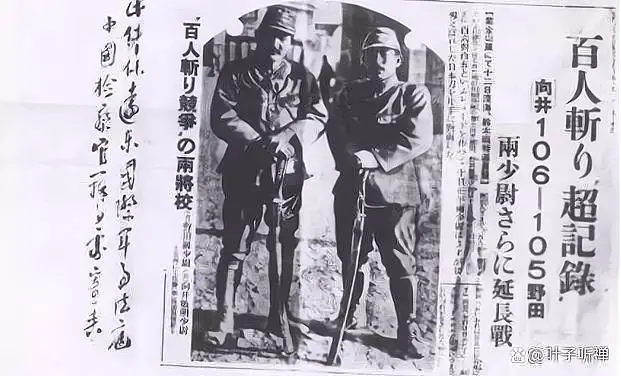
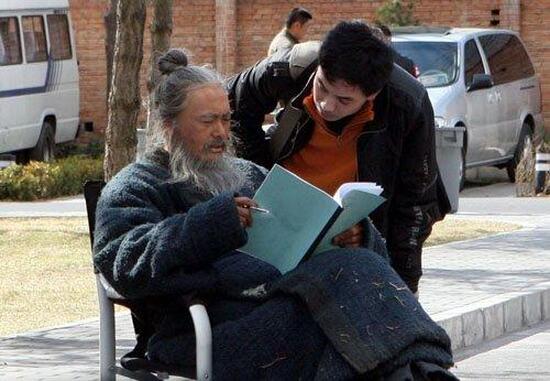
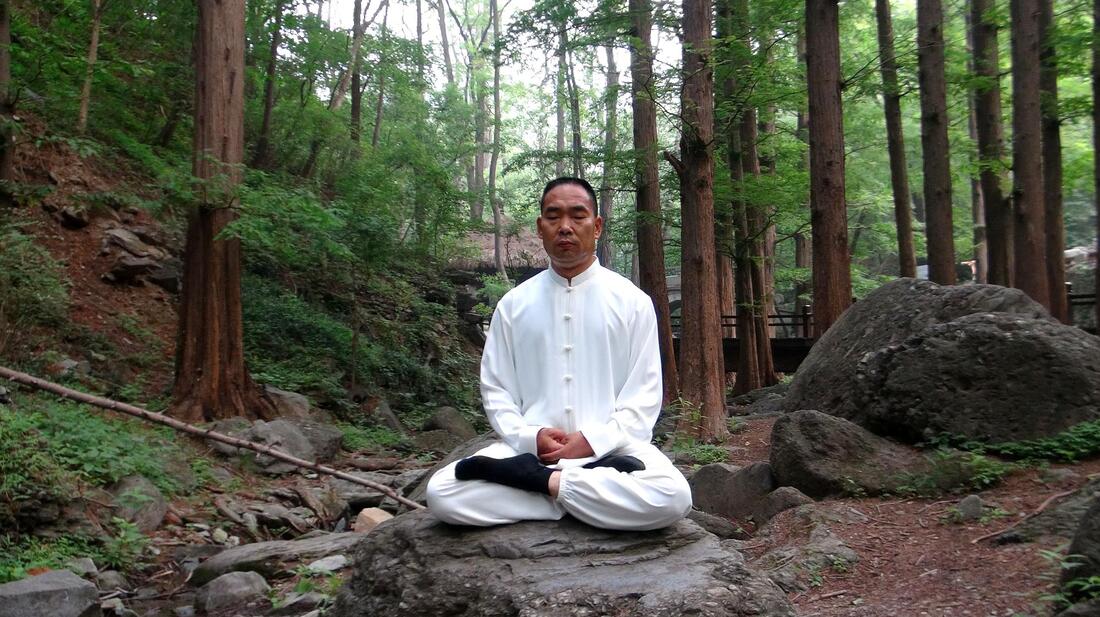
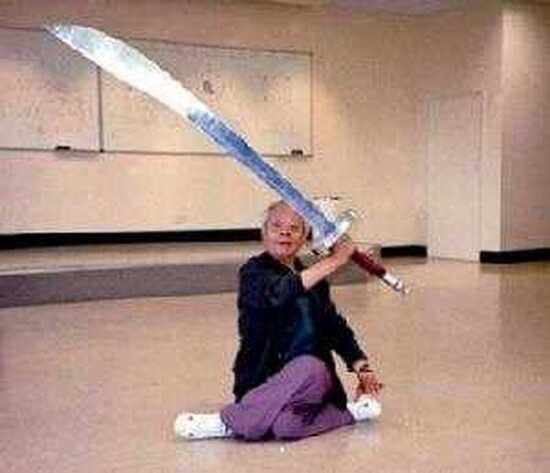
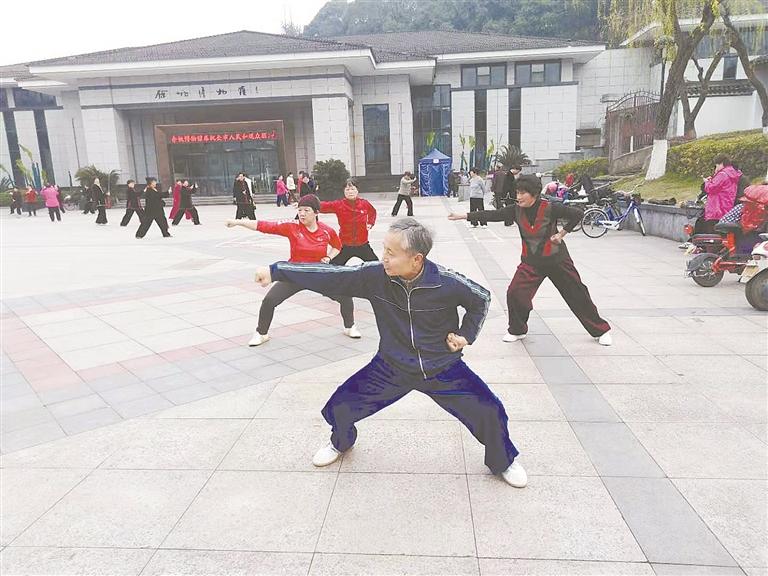
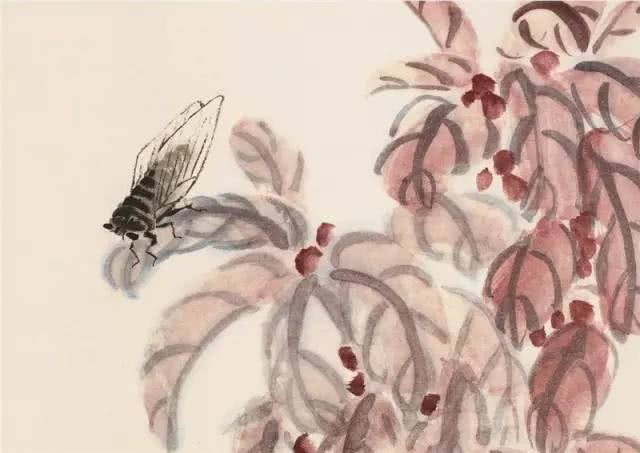
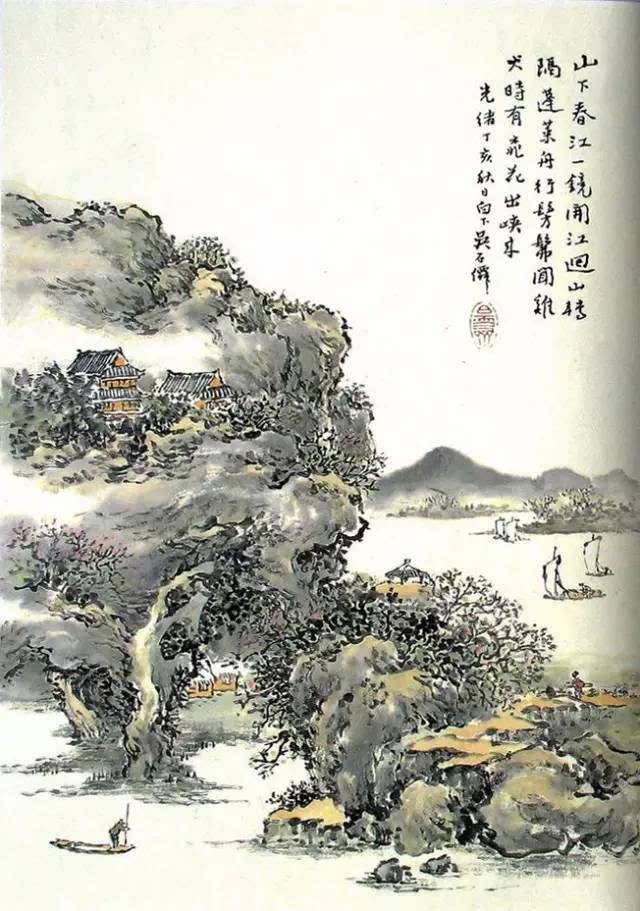
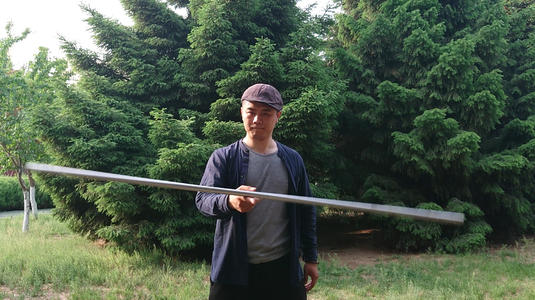
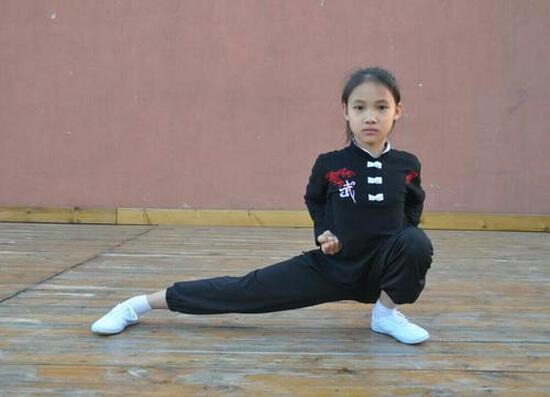
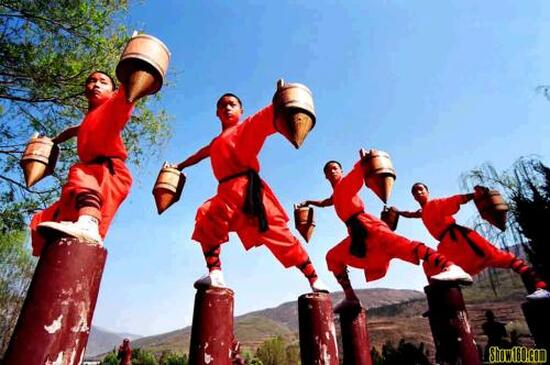
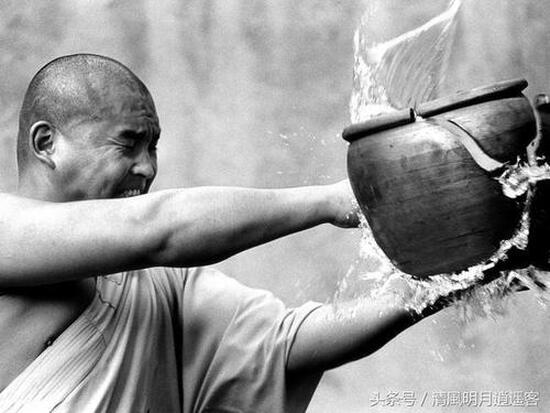
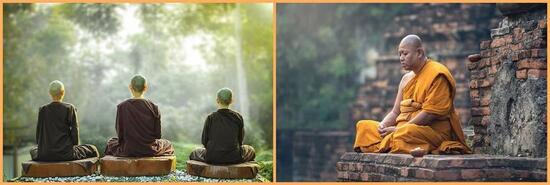
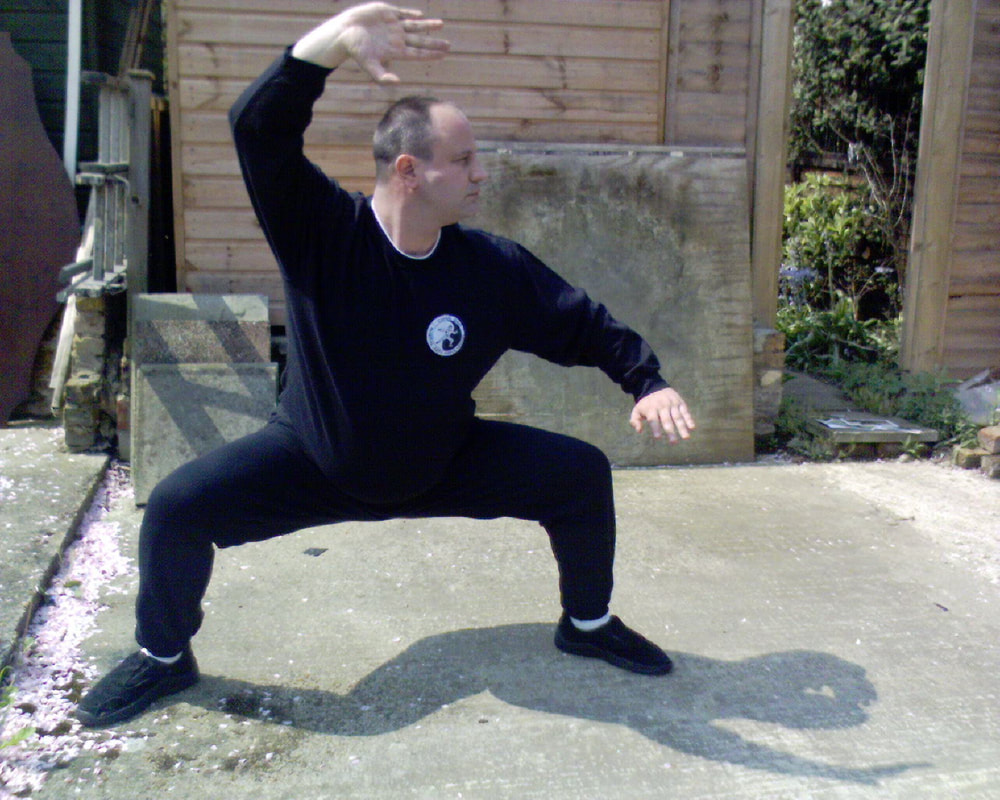
 RSS Feed
RSS Feed